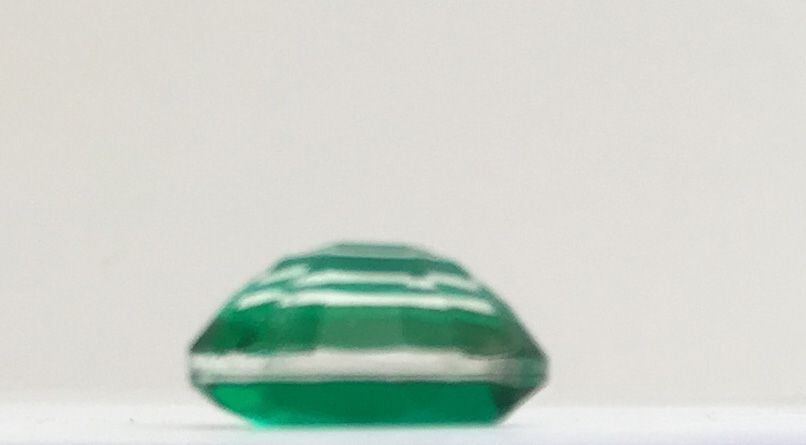A gemstones

Abalone (Paua) shell
These are not natural colours but have been dyed and then topped with a resin.
Dragon Vein Agate
Either cracked and dyed agate or a manmade glass gemstone.
Sieber Agate
is a glass-type material that's a by-product of copper smelting in Germany.

Green Amber
Natural green amber is rare and expensive. Golden amber can be treated by burning the back so that when you look down into the stone from the top it appears green.

Ametrine
Left is a synthetic quartz ametrine and a rough block of synthetic quartz - Right is a natural ametrine. Note - the difference is not as simple to identify as the colour difference between these examples.

Ammolite
Fossilised ammonite shell, may be stabilised with resin or offered as a doublet or triplet to improve durability.

Apatite
Sold as lab created apatite, this looks more like chips of kyanite in resin.

Azurite-malachite
Resin or something along those lines being sold as natural azurite-malachite-turquoise...
B gemstones

Blue John
Variety of fluorite only found in Derbyshire, UK.
Brittle and usually impregnated with resin to help bind it together.

Bowlerite
is cut from the outer skin of vintage bowling balls.

Bridewell stone
is a manmade stone where a mixture of minerals and elements, are heated to over 1000 °C with fibrous “inclusions” forming during the cooling process.

Bridewell stone
is a manmade stone where a mixture of minerals and elements, are heated to over 1000 °C with needle-like “inclusions” forming during the cooling process.
C gemstones

Charoite composite
chips of natural charoite in a metallic resin matrix.

Reconstituted or reconstructed Coral
Pulverised coral, mixed with resin and dyed before being cut into gemstones.

"Synthetic" Coral
A manmade material created by sintering (heating and compressing) calcite powder and pigmentation.

Cubic Zirconia (CZ)
Manmade material with no natural equivalent gemstone - used to imitate many different gemstones.
D gemstones

None yet but this resource is continually being added to.
E gemstones

Emerald
This "certified natural" emerald is actually a dyed quartz - you can clearly see the dark lines where the dye is concentrated in surface reaching fractures.
Emerald
sold as emerald... but it is plastic...
Emerald
sold as emerald... but it is quench cracked glass...

Hydrothermal Emerald
A manmade, synthetic emerald which has the same chemical, physical and optical properties as a natural emerald.

Mount St Helens Emerald
a manmade glass, said to contain ash from the Mt St Helens volcanic eruption.

Soude Emerald
Colourless top and bottom (may be quartz, synthetic spinel, sapphire or beryl) glued together with green glue. This can clearly be seen from the side.

Synthetic Emerald
A manmade emerald which has the same chemical, physical and optical properties as a natural emerald.

Trapiche Emerald
Sold as a doublet... but this looks like an image or transfer between two clear layers of something (still waiting to be tested)!

Trapiche Emerald
Sold as a "certified" but this is a dyed quartz, with the dark trapiche markings drawn on with pen!
F gemstones

Blue John Fluorite
Variety of fluorite only found in Derbyshire, UK.
Brittle and usually impregnated with resin to help bind it together.

Fordite
Also called ‘Motor agate’ or ‘Detroit agate’, Fordite is layers of vehicle paint that have built up and been baked on spray booths at motor plants.

Fossil coral
This was sold as natural fossil coral... which it was before it was dyed!
G gemstones

Garnet Topped Doublet
A thin slice of red garnet is fused to the surface of molten glass. The join line may be seen in the crown facets of the stone. Historically used to imitate Emerald, Ruby or Sapphire (depending on glass colour).

Nano or Nanosital Glass
A manmade glass-ceramic material.

Goldstone
Goldstone is a coloured glass with copper inclusions. Also seen in blue and green.
H gemstones

Helenite
a manmade glass, said to contain ash from the Mt St Helens volcanic eruption.

Howlite turquoise
is off-white howlite which has been dyed to imitate turquoise.
